|
 Cortinarius subcastanellus Cortinarius subcastanellus
SynonymsRozites castanellus
BiostatusPresent in region - Indigenous. Endemic
Images (click to enlarge)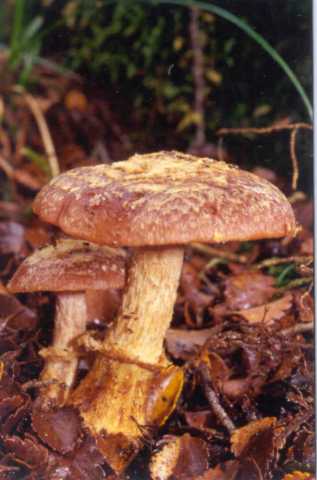
Caption: specimen RR NZ13
Owner: Richard Robinson | 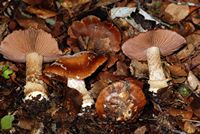
Owner: J.A. Cooper | 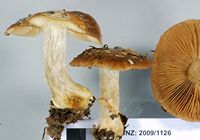
Owner: J.A. Cooper | 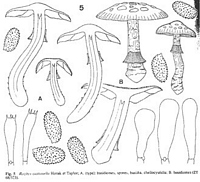 | 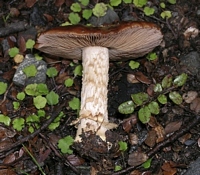
Owner: J.A. Cooper | 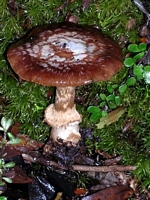
Owner: J.A. Cooper | 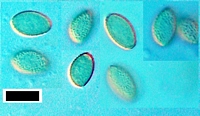
Caption: scale=10um. Spores
Owner: J.A. Cooper | 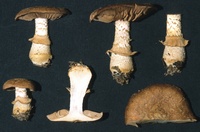
Caption: ZT9454
Owner: E. Horak: © Creative Commons Attribution-Noncommercial 3.0 New Zealand | 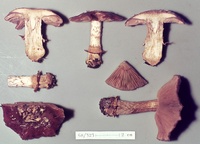
Caption: ZT68-323
Owner: E. Horak: © Creative Commons Attribution-Noncommercial 3.0 New Zealand | 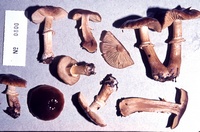
Caption: ZT0800
Owner: E. Horak: © Creative Commons Attribution-Noncommercial 3.0 New Zealand | 
Caption: ZT0814
Owner: E. Horak: © Creative Commons Attribution-Noncommercial 3.0 New Zealand | 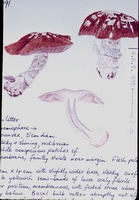
Caption: ZT0835 , Taylor 1091
Owner: E. Horak: © Creative Commons Attribution-Noncommercial 3.0 New Zealand | 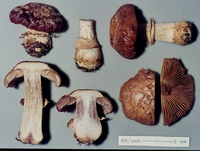
Caption: ZT69-206
Owner: E. Horak: © Creative Commons Attribution-Noncommercial 3.0 New Zealand | 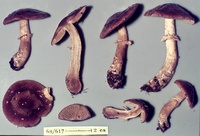
Caption: ZT68-617 , Holotype
Owner: E. Horak: © Creative Commons Attribution-Noncommercial 3.0 New Zealand | 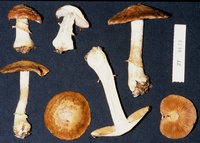
Caption: ZT8673
Owner: E. Horak: © Creative Commons Attribution-Noncommercial 3.0 New Zealand | 
Caption: Dried type specimen
Owner: Herb PDD | |
Article: Horak, E.; Taylor, G.M. (1982) [1981]. Fungi Agaricini Novazelandiae. XI. Rozites Karsten. New Zealand Journal of Botany 19(4): 353-360 (http://www.rsnz.org/publish/abstracts.php).
Description: Pileus - 60 mm, hemispheric or convex when young becoming umbonate-expanded or depressed at centre; brown to red-brown when moist, fading to orange-brown or pale reddish brown when drying or with age; glutinous, slightly hygrophanous, margin indistinctly striate, covered with conspicuous whitish, ochre or reddish brown patches from veil. Lamellae adnate to emarginate, crowded; pale ochre-argillaceous turning rust-brown, edge concolorous (occasionally lilac), even to crenulateserate. Stipe -80 x -15 mm, cylindric above, base bulbous to marginate; whitish soon turning pale ochre, fibrillose; annulus membranous, striate, persistent, pale brown; towards base with whitish to pale brown, fibrillose to sub membranous remnants of veil; dry, hollow, single, in groups. Context white to brownish in aged basidiomes. Odour and taste not distinctive. Chemical reactions on pileus: KOH -brown: HC1, NH3 - negative. Spore print brown to rust-brown. Spores 9-12 (-13) x 5-7 µm, elliptic, mucro none, verrucose, brown. Basidia 25-35 x 7-10 µm, 4-spored. Cheilocystidia 30-60 x 9 14 µm, clavate, membrane hyaline, thin-walled, scattered on gill edge. Cuticle a cutis of cylindric, gelatinised hyphae (2-6 µm diam.), cells of subcutis subglobose to polygonal, membranes strongly encrusted with brown (KOH) pigment. Clamp connections present.
Habitat: o n soil among litter and moss under Nothofagus menziesii (Hook.f.) Oerst., N. solandri (Hook.f.) Oerst., and N. fusca (Hook.f.) Oerst. New Zealand.
Notes: In New Zealand, Rozites castanella is by far the most common species of Rozites. This agaric is well distinguished by its chestnut-brown, glutinous pileus and the often-marginate bulb at the base of the stipe. Microscopically R. castanella is separated from the other New Zealand taxa by the rather small, elliptical spores.
In the field old and degraded basidiomes of R. castanella can be taken for Descolea majestalica Horak (1971b) whose glutinous pilei, however, never show the same conspicuous rust-brown colour seen in the former species.
|